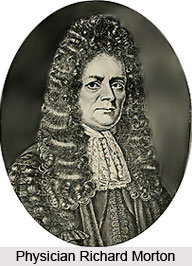 Chicken pox is a viral disease, which has been affecting people and causing numerous deaths for the last several centuries. It is also known as Laghu Masurika in India. The history of chicken pox in India dates back to the ancient times, as its first reference was found in the Caraka Samhita Sutra. The Caraka Samhita had mentioned about both chicken pox and small pox.
Chicken pox is a viral disease, which has been affecting people and causing numerous deaths for the last several centuries. It is also known as Laghu Masurika in India. The history of chicken pox in India dates back to the ancient times, as its first reference was found in the Caraka Samhita Sutra. The Caraka Samhita had mentioned about both chicken pox and small pox.
In the 16th century, Giovanni Filippo of Italy identified the disease, between the years of 1510 and 1580. In the 17th century, the disease got its name from an English physician named Richard Morton. He gave the name of chicken pox to the disease, as he thought that it was a milder form of small pox. However, some people also believe that another English physician named William Heberden was the first person to discover the disease, in 1767. He also proved chicken pox to be different from small pox.
The origin of the word "chicken pox" is quite interesting. The word is related to the corrupted Old English word, "giccin" that meant, "itching". The disease was described as "no very great danger" and hence, as a "chicken" version of the pox. Some also believe that the doctors identifying this disease commonly used the word "chicken pox" in earlier centuries. The word `pox` meant curse, in the medieval period. For this reason, the people of that period used to think the disease as a plague brought upon the cursed children by using black magic.
 In India, superstitions and blind beliefs have been an integral part of the history of chicken pox. The people in India have a lot of misbelieves about the disease since its discovery in the country. They used to mix chicken pox with the deadly small pox, mainly due to their ignorance about the disease. Though, small pox has now been eradicated entirely from India and the world, it used to cause numerous deaths in Kerala during the 1950s and 1960s. The Keralites call both the diseases of chicken pox and small pox, by the same name of "Vasoori" in Malayalam.
In India, superstitions and blind beliefs have been an integral part of the history of chicken pox. The people in India have a lot of misbelieves about the disease since its discovery in the country. They used to mix chicken pox with the deadly small pox, mainly due to their ignorance about the disease. Though, small pox has now been eradicated entirely from India and the world, it used to cause numerous deaths in Kerala during the 1950s and 1960s. The Keralites call both the diseases of chicken pox and small pox, by the same name of "Vasoori" in Malayalam.
Many Indians especially in the rural areas, believe that chicken pox is mainly caused by the wrath of the local god or goddess. They isolate the affected person from the society. The relatives of the patient move out leaving the patient alone in a house (a leftover custom from the deadly Small Pox). The patient is also put under the care of special people, who are called as "Vasoori Caretakers" in Malayalam. These caretakers are supposed to be brave and able to withstand all the wrath of the angry gods.
However, a lot of actions are being taken for eradicating the superstitions and blind beliefs about chicken pox, from the minds of Indian people. The prevention of chicken pox by about 95% through vaccination is considered as a great achievement in the history of chicken pox.




